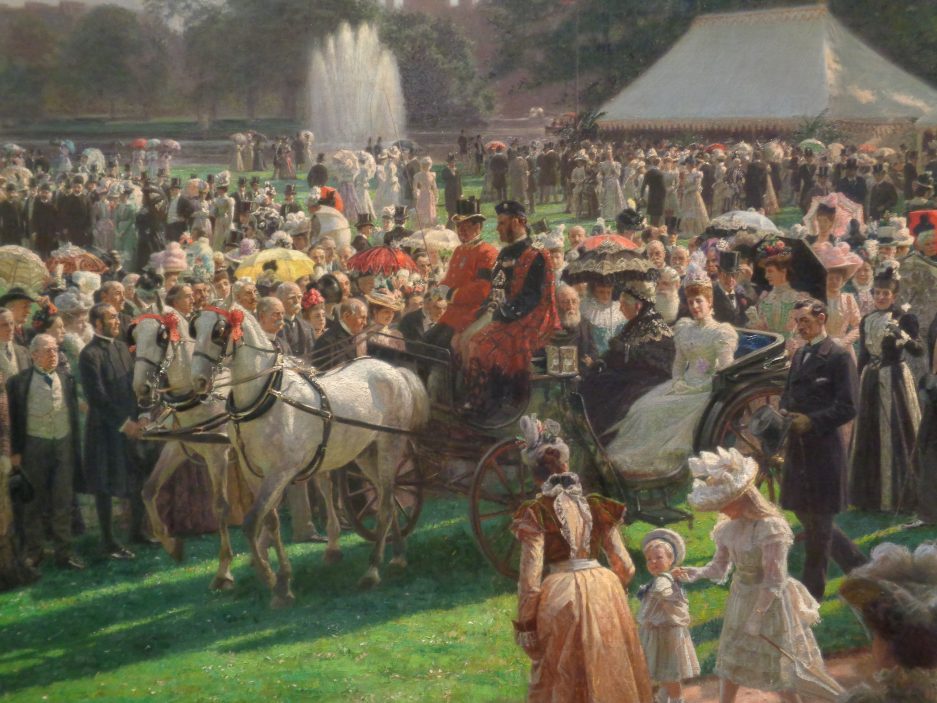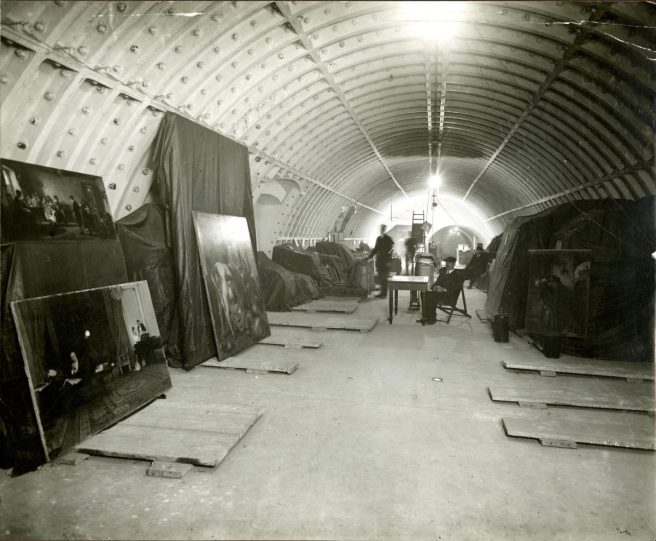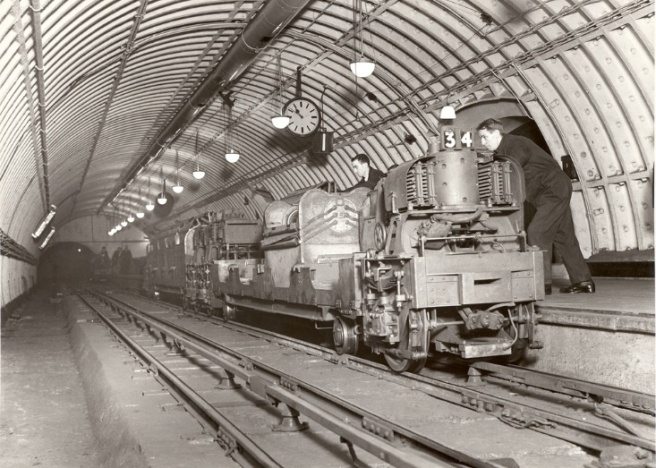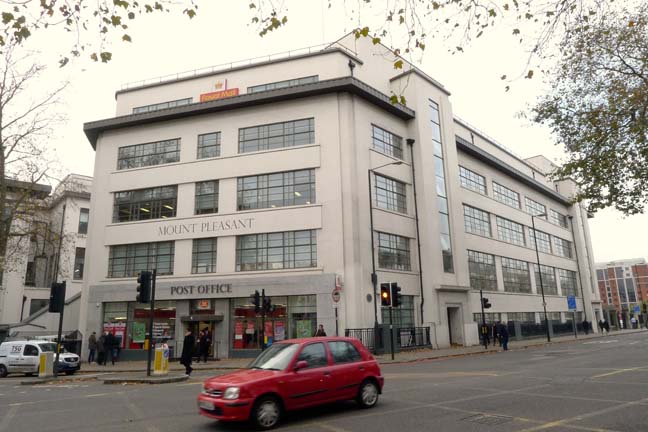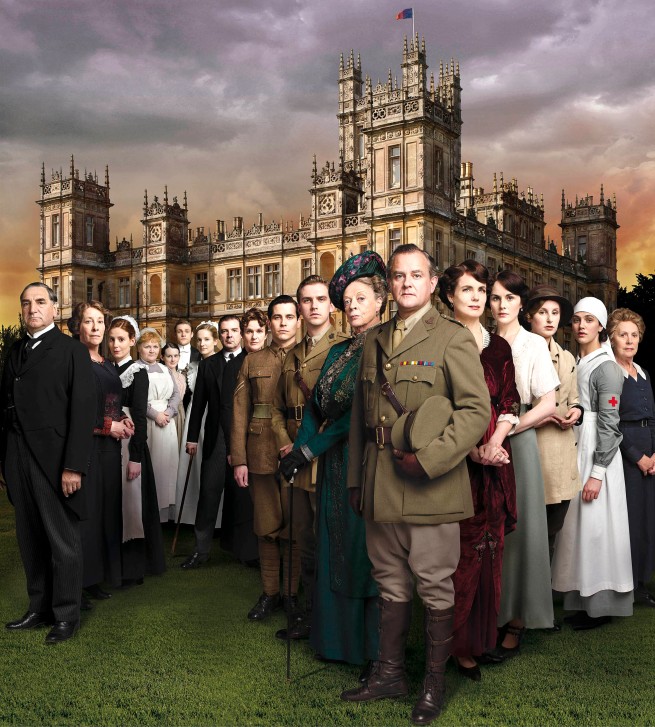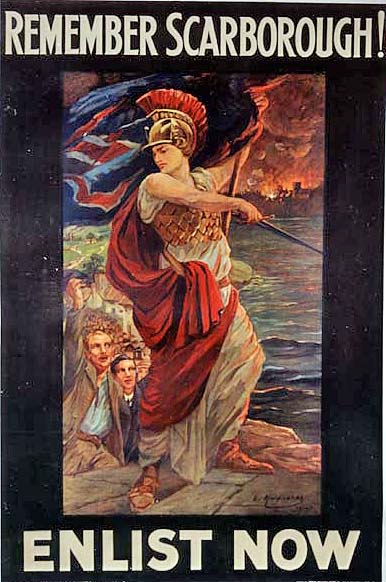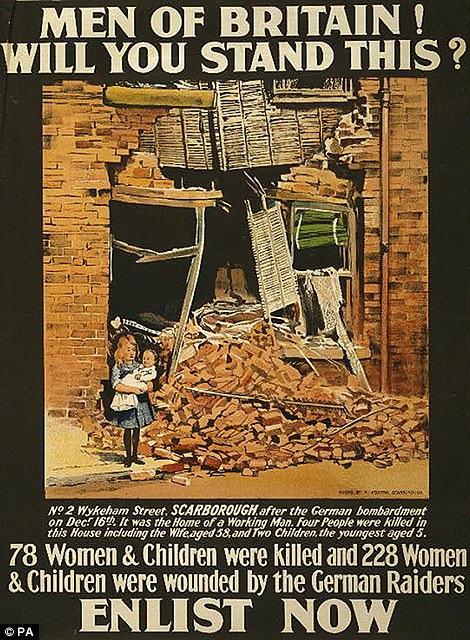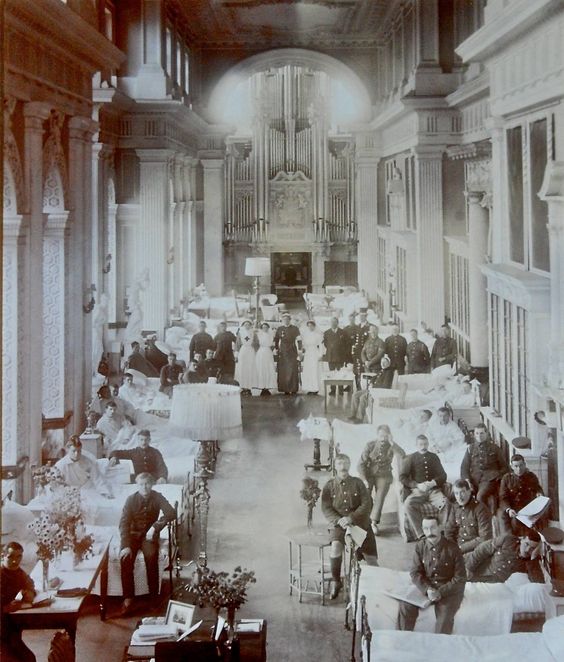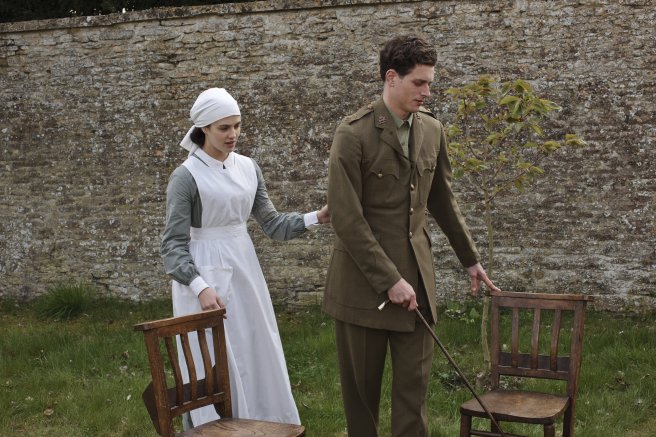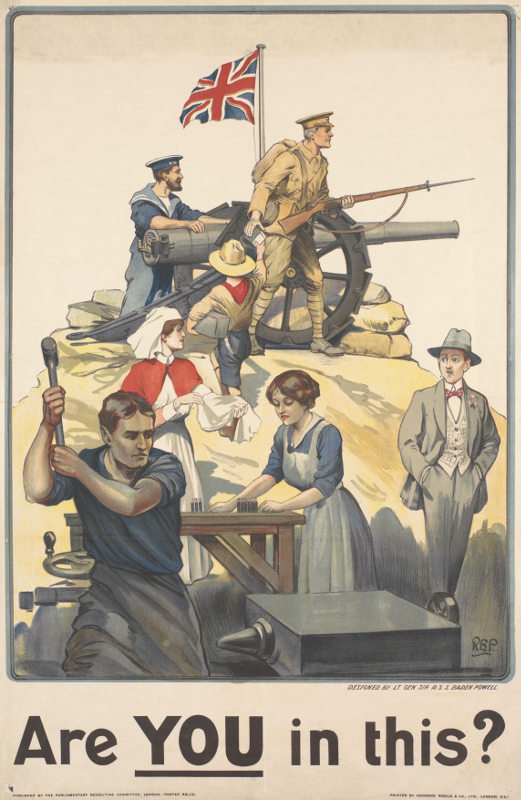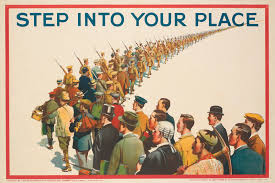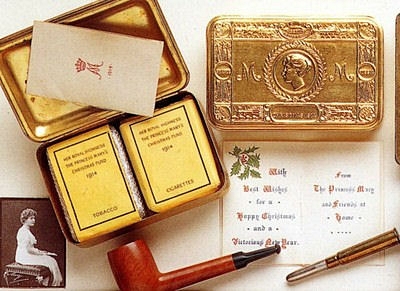In his review of the 2013 Downton Abbey Christmas special, the TV critic Jim Shelley wrote that “Downton Abbey was shamelessly, shamefully aimed at the Americans, rather than the British audience that had made it so popular in the first place.” He could have been writing about the whole programme though and it became more apparent from the third series onwards as the history began to disappear and the soap opera aspect took over. It wasn’t helped by the endless junkets to America, where the actors seemed to be subjected to a Groundhog Day of the same chat show appearances, same questions, and same events over and over again.

As we have said several times in our critique of this programme, Downton Abbey’s main problem is its very ahistoricity: it doesn’t just trivialise and misrepresent history but also the attitudes and behaviours of people during the time frame it was set. All of this despite the insistence that the programme is accurate, well researched and that it’s realistic. It is nothing of the sort, many of the story lines are anachronistic, crowbarred in a way that looks and feels forced; not to mention lacking any logical sense.
One of the main complaints with Downton Abbey and other period dramas in general is what one blogger calls “today’s imposition of 21st-century ideas and concerns on characters placed rather than fully located in [the past].” These dramas make an effort with the costumes, settings and props but that’s where it all ends, the way the characters sometimes behave and with the storylines, they might as well have been set today than say in 1912 or 1925!
We see various examples of these anachronisms in Downton Abbey – such as Robert’s reaction to his middle daughter Edith’s pregnancy which was more in line with a father from the 2010s rather than the 1920s. There’s Rose having too much freedom as an unmarried woman when someone like her would have been strictly chaperoned until she was married; or servants being buddy-buddy with their employers when that would not have been the case. Apart from the anachronistic storylines, there are two major omissions – the first being religion and the second being the empire.
Losing one’s religion:
As another blogger complained, this series projected “secularism back onto a time and place and way of life where it did not yet exist.” In an interview, the programme’s historical adviser Alastair Bruce claimed that the absence of religion was due to “executives in charge of the series had ordered producers to ‘leave religion out of it’, for fear of alienating an increasingly atheistic public.” He added, “Everyone panics when you try to do anything religious on the telly.”
This I believe is nonsense. Another popular period drama, Call the Midwife (BBC) not only has religion as one of the main themes of the programme but also religious people as central characters. Yet this programme time and again has been a hit with both critics and viewers. Although it has its flaws it’s not shy about tacking difficult story lines and depicting attitudes during the time the narrative is set no matter how unpalatable it is to our modern day sensibilities. It also depicts how religion and religious people still played a big part in Britain in the late 1950s and 1960s, even when organised religion was in retreat from everyday life. If Call the Midwife can do all that, then Downton Abbey which is set in the 1910s and 1920s has no such excuse.
Even Victoria (ITV) has featured religion in many of its scenes and one episode in the recent second series had religion as one of its main themes. And while the programme has taken some liberties with Queen Victoria’s life, aspects of religion such as the churching ritual that Victoria had to undergo following the birth of her first child and religious divisions hampering famine relief in Ireland was used with good effect to depict attitudes and customs of British society high and low of the late 1830s and 1840s. (It was as recently as 1979 that the Church of England renamed the rite of the churching of women in the Prayer Book to one of “A Thanksgiving for the Birth or Adoption of a Child.”)
Whilst it’s true that in Downton Abbey there have been a few scenes set in the village church and the local vicar has made few appearances in series 2 and 3, there is a complete absence of religion with all the characters lacking any sense of religious belief and practice. Any literature of the period and contemporary accounts demonstrates the importance of religion in people’s lives. Although there were some who identified themselves as agnostic or even atheists, this was mostly confined to the middle class intelligentsia. For the majority, people identified themselves with a particular faith or sect, went to Church or the synagogue every week, and discussed religious issues with some even turning their hand to writing about theology and other aspects of their faith.
Especially in a rural area, religion was part and parcel of everyday life and the local lord and his family were obliged to set an example to their servants, tenants and the local community. It didn’t matter whether they were Church of England, Church of Scotland, Roman Catholic, Jewish or Nonconformist (a shorthand term used for Protestant sects other than the Established Churches) but religious observance either of the strict or nominal kind was scrupulously observed. The majority of the aristocracy belonged (at least nominally) to the Church of England and this was reinforced by the fact that bishops also sat in the House of Lords, that the local vicar was dependent on his living on the local lord and that the Church was an acceptable career for younger sons of the aristocracy and gentry. In effect all these ensured that the unity of Church and State, prominent in British institutions such as the Monarchy and Parliament, was also replicated on the local level; which also meant that the local vicar and his wife were an integral part of the local community’s social life and were often related to the local aristocracy and gentry. They would be regularly asked to dinner and other social events in the Big House, while the vicar’s wife and the chatelaine would regularly work together on a host of charitable endeavours and appeals. Historically there have even been some aristocrats who took an active role in religious life and education, most notably Millicent Duchess of Sutherland with her Bible study groups not just confined to her household but among her husband’s tenants and the local village. There was also Father the Honourable Ignatius Spencer, the younger son of the 4th Earl Spencer, who started out as an Anglican vicar but converted to Roman Catholicism and took holy orders in that church. In light of this, the near absence of religion and its practice in Downton Abbey renders meaningless its claim to accurately represent British life during the early decades of the twentieth century.

Defenders will point out that showing religion wouldn’t fit the storyline or that there is the religion due to the weddings, christening – and the vicar does pop up in the programme. I find this a spurious excuse – religion was a part of everyday life in the era around the period in which Downton is set, in a way we can’t imagine in our largely secular world. Faith, or at least lip service to religious observance, was all pervasive, and the Church, along with the Empire and the monarchy, had a deep significance and importance for very many people. Religion and religious teaching was deeply embedded in people’s psyche, church-going on a Sunday was still common, and many children of all social classes attended a local Sunday School.
Churches also undertook a considerable amount of charitable and welfare work and provided a venue for social and community activities as well as spiritual comfort in times of national crisis. National days of prayer were particularly well supported during the Great War, Sunday was generally regarded as a day of rest and all shops closed on Sundays.
In her diaries written during the First World War, Lillie Scales describes the role religion played for her and many other people:
August 1914 – Intercession services are being held in many places…one feels that only hope is in God and that He will defend the right.
- On Sunday January 6th we had the national day of intercession and it was a wonderful day. We had good congregations, but one heard everywhere of crowded churches, and even queues.
November 11th 1918 George (Lillie’s husband) had gone to St Giles’s at 11 o’clock, and found people pouring into the church for an impromptu thanksgiving service, and there were services there all morning. There had been an impromptu great thanksgiving service in St Paul’s at 12 noon.
November 17th 1918 – There was a great thanksgiving service in St Paul’s, and churches everywhere were crowded, queues in many places.
Church membership (according to faithsurvey.co.uk) peaked in 1900 at 33% of the population, and in 1920 was just under 10 million in a population of around 40 million – and there must have been many more people who attended church because of social, moral or familial pressure or expectation. This aspect of existence – weekly church attendance, the great annual rituals of Whitsun, Easter, Advent and Christmas, the importance in public life that the established church had and the comfort religion gave to many (especially during the war years) are simply ignored – because Bruce claimed that he was told to show it would upset viewers.
To a great number of people in the UK now, religion isn’t important and they don’t realise the extent to which it was in the Downton era. That’s why Alastair Bruce got away with his comment and no-one picked up the logical fail to the claim that this was supposed to be an accurate depiction of life 100 years ago but that a very significant chunk of social existence was omitted. Write a drama that panders to what as writer you perceive to be the susceptibilities and prejudices of your audience instead of depicting historical facts and you end up with Braveheart – or Downton Abbey.
I think a good writer would have found a way to have people going about their everyday life in the background and the storyline in the foreground. I am of the view that one of the whole points of a drama is to show facets of these characters and religion might not necessarily be a major story line but it could be something in the background to give the viewer a picture of what was life then. If religion was depicted as part of everyday life in Downton Abbey, it could have added more poignancy to Thomas’s struggles or Robert’s crises. We could have seen Thomas wresting with the conflict between religious dogma and society’s attitudes against his own sexuality and desires, or Robert with his personal issues having a crisis of faith due to feeling unwanted during the war, realising that his marriage is not what it seemed and the family’s subsequent precarious finances. This is real story telling and not the half-baked and flimsy ones that we’ve seen on screen.
Don’t Mention the Empire:
When the TV critic Jim Shelley groused that the programme was pandering shamelessly to the Americans, it was an astute observation. One can see this with the casting of veteran Hollywood actress Shirley MacLaine as Martha Levinson, Cora’s mother in series 3 then contriving her return in the series 4 Christmas special with her son Harold (Paul Giamatti) in tow. The aforementioned special was seemingly designed to pander to Americans’ fascination with British royalty, pomp and circumstance as well as the endless parade of evening gowns and spectacle that the viewing public had come to expect.
Perhaps surprisingly for the producers and TV executives, the episode was greeted with derision and hilarity with the plot described as “ludicrous” and lacking credibility. Even the much-vaunted research and accuracy was panned, as several viewers pointed out mistakes ranging from the way the presentation was done down to errors in dress and uniforms.
This pandering to the Americans is perhaps one reason why the British Empire is conspicuously absent in Downton Abbey. For sure there are a few fleeting references here and there but it’s very much like Basil Fawlty going on about not mentioning the war. Just like with religion, Fellowes must have decided that the empire didn’t fit into his plot so it’s not mentioned at all. The only obligatory references are with Robert’s cousin the Marquess of Flintshire going to India to become a provincial governor, a fleeting mention of the Amritsar Massacre and listening to a radio broadcast of George V opening the British Empire Exhibition at Wembley (a very convenient prompt to tell the audience that series 5 is set in 1924).
Apart from what I’ve mentioned above, the empire might not as well exist in Downton Abbey. This is despite the fact that historically it was an omnipresent presence in British life and we are still living with its legacy for good or ill to this very day. The popular celebrity genealogy programme Who Do You Think You Are? (BBC) through several episodes featuring the likes of actor Charles Dance, Olympic athlete Sebastian Coe, chef Ainsley Harriott, journalist Natasha Kaplinsky, actress Meera Syal and most recently choreographer Craig Revel Horwood have demonstrated how much the empire is very much interwoven into the very fabric of this country. We can see the empire’s influence in the food that we eat, in our decorative arts and architecture, not to mention that many place names up and down Britain have their origins in places that were part of the empire on which “the sun never sets.” These influences have been cemented further following the end of the Second World War when immigration grew steadily from countries that comprised the former empire.
During the period in which Downton Abbey is set, the empire featured prominently in national life and everyday life (one example being the annual celebration of Empire Day). The positions of Colonial Secretary and Secretary of State for India were seen as prestigious, news concerning the empire was widely covered and the comings and goings of politicians and famous people from the colonies were headline news. There were also the various events that underlined the bonds between Britain and its colonies through industrial exhibitions held in major cities; the most famous being that held at Wembley in 1924-5. These exhibitions not only presented the best of home grown industry but also products from the empire such as timber from Canada, butter and lamb from New Zealand, cotton from India and others. In short, exhibitions such as those held at Wembley were, in the observation of Anne Clendinning, to “celebrate imperial unity and to increase mutual economic cooperation” as well as highlight the empire which was described by King George V as a “family of nations.”

This idea of the empire as a “family of nations” isn’t a new one but it was used by Queen Victoria to cement the bonds between Britain and a growing empire during the second half of the 19th century with her sons and grandsons touring India and the white dominions (Canada, Australia, New Zealand) on her behalf. This was further underlined when Victoria’s son-in-law the future 9th duke of Argyll served as Governor-General of Canada. In 1911, George V went one step further by travelling to India to be present at a Durbar staged to mark his coronation as emperor of India; and following the end of the First World War, his sons all undertook tours of the empire on his behalf with the Duke of York (the future George VI) travelling to the Antipodes and Africa while the Duke of Gloucester undertook tours of Africa. However the most indefatigable was the oldest son, the Prince of Wales (the future Edward VIII) when during the 1920s and 1930s he became the first member of the royal family to visit nearly all parts of the empire during his world tours. These tours were so successful that in David Cannadine’s words, “the crown was made truly imperial and the empire authentically royal.”



Royal tours followed a certain formula as described by Cannadine in his book Ornamentalism whereby “[t]hese were grand progresses by land and sea, lasting for many months and covering many miles, involving countless receptions, dinners, parades and speeches, and all carried on before vast, delighted and admiring crowds.” By the twentieth century, following Edward VII’s dictum that the more people see the royals the better it is for the country, the “arrangement for these tours became even more elaborate, and the tours even more novel, thrilling and spectacular, as the royal lineaments and sovereign symbols were brought vividly and vitally alive.” There were also the reciprocal visits from African chiefs, Indian maharajahs, and royals from the various Pacific islands and sultans from Malaya where they were treated with the courtesy, deference, pomp and circumstance that their status demanded. All of these reinforced the idea that the empire was indeed a “family of nations.”
On a more personal level, the empire had an impact on huge swathes of the British population not just with what they consumed or bought but the personal and familial level. A huge percentage of the UK population had at least one family member or a friend living and working in the colonies. Thousands of people together with their families emigrated to Canada, Australia, New Zealand and South Africa in search of a better life lured by the opportunity afforded by huge tracts of land for farming, herding and mining; a cheaper standard of living and the chance to start anew.
A cheaper standard of living and lack of career prospects at home also drove many young men to try their luck in the colonies. The empire provided career opportunities and prospects for advancement that were not readily available in Britain. This was attractive for younger sons of the aristocracy and gentry as well as those from the upper middle classes in straitened conditions – there was the army, the colonial civil service as well as being on the staff of a governor or viceroy which allowed them avenues for promotion, enabling them to marry and provide for a wife and family in a way that would not be possible in Britain. Being an officer in a prestigious colonial or Indian regiment or being an aide-de-camp or private secretary to the viceroy or a governor-general made a young man a very attractive marriage prospect indeed.
There were also opportunities in the private sector for engineers, surveyors, bankers, scientists and the like as British firms and banks also opened branches in the colonies. Others saw the colonies as a way where they could be their own masters whether it be setting up their own business or acquiring land for farming or mining, prospecting for gold or other valuable minerals. For those who were not inclined towards government service or farming, the empire also provided prospects in the fields of religion, education, medicine and the social sciences. In short, the British Empire showed that there were rewards for those who were willing to take risks and leave the comfort zone of Britain.
In light of this, Downton Abbey could have made much more use of the empire with its storylines. For instance it could be used to write out characters such as Sybil after Jessica Brown Findlay refused to renew her contract. It’s true that Sybil, Tom and their baby daughter could have moved to America given they have family in that country but if they really wanted a fresh start and a clear break from their pasts then immigrating to Canada, Australia, New Zealand or South Africa would have been much better as the Bransons could create a new life of their own unencumbered by their backgrounds.
The same could also be said of downstairs, where it would be likely that at least a few of the servants would have at least known someone who had gone to the colonies for better work prospects, and again this could be another way to write out someone like Daisy or any of the footmen. Or even Anna and Mr Bates, the money that they have saved would have allowed them not only to open the guesthouse that they want but also perhaps begin a new life in any of the Dominions or try their hand at running at a rubber plantation in Malaya or a tea farm in India.
Crucially however using the empire would have allowed Rose to exit the programme at the end of series 4. The series 4 Christmas special could have ended with Rose departing for India to re-join her parents following her season. Given her straitened financial circumstances and her less than impeccable moral credentials, she would have had problems finding a husband in Britain especially as after the First World War there were fewer men to go around. In fact India would have been a much better bet if she was looking for a husband. There was the army, the Indian Civil Service, the Viceroy’s office, the staff of the various provincial governors (among them her father Lord Flintshire) and of course those who were working for British companies based in India. Rose would be no different to the numbers of young upper and middle class young British women going to India in order to find an eligible young man to marry. For the women who went to India and who were known as the “Fishing Fleet”, it was an attractive choice – as Anne de Courcy wrote:
“By the nineteenth century, India was seen as a marriage market for girls neither pretty nor rich enough to make at home what was known as ‘a good match’, the aim of all young respectable young women – indeed, perhaps not to make one at all. In India, where European men greatly outnumbered European women, they would be besieged by suitors, many of whom be richer or have more prospects than anyone they could meet in England.” (p. 3)
And that was the motivation to go to India especially as for women, the main goal was to marry and raise a family. For upper and middle class women, the social life such as the London Season and country house visits were all geared towards young women to make a good match but in reality a great number of them didn’t (especially after the First World War when Britain had been denuded of eligible young men). As Mabell Countess of Airlie and countless other social commentators observed, ideally a young woman should have received at least a proposal by the end of her first season and should be married by the age of twenty. A woman who had reached the age of twenty five unmarried was already considered to be an old maid so it’s not surprising that many young women were dispatched by worried parents to try their luck in India – a last throw of the dice before settling into spinsterhood and a future of caring for aged parents and/or nephews and nieces.
But of course, Rose stays on (even when there is no real raison d’etre to her character) and eventually marries the Hon Atticus Aldridge, the son and heir to Viscount Sinderby. Much was made of him being Jewish and while someone like him would have at least five years’ worth of debutantes to choose from with some as rich or richer than he is (thereby cementing an alliance between wealth and wealth) but no, love has to triumph even when it’s crowbarred in as a way of giving a redundant character something to do, and any parental objection to the match is dismissed as bigotry – forgetting that the parents (especially the Sinderbys) would by the standards of the time have legitimate objections to the match and not just with regards to religious differences.

Once Rose and Atticus are married she is written out of the programme, but they make a brief appearance during the finale and its revealed that they are living in America. As Atticus works in banking and finance it would be more plausible to have based him in the City of London, where a number of Jewish founded banks such as Samuel Montagu might have provided a congenial niche for a rich and personable young man. If they were going to be posted overseas, it would be more likely that it would be Shanghai in China, which despite not being part of the British Empire had a substantial presence in commerce and banking. Why Fellowes had to contrive to say that they’re in America is baffling unless this is him still pandering to the American market until the very end.
Conclusion:
In our previous posts on Downton Abbey, we have mentioned several issues with the programme with regards to its writing, plotting and characterisation. Dramatic weight and rhythm has always been a problem with this programme, with trivial and irrelevant story lines being given equal time and importance with vital ones. There is as well no sense of the appropriate time for a story line and the programme itself has been riddled by one delayed action plot after the other; the war memorial; the lavish post-war entertaining after the family has lost its money rather than before the war, when it could be justified by having three daughters to marry off; even the family doing their bit for the war effort but not until the war had been going on for two years – all of these meant that these story lines have been robbed of their historical context and as a result the characters do not behave in a way that is of their time.
The history and its use and abuse as a narrative driver are a major issue. As stated earlier in this entry, Downton Abbey is ahistory not history. It might pay lip service to a few historical events such as the sinking of the Titanic and real life historical figures such as Neville Chamberlain but in the end, the programme portrays a false and incomplete picture of the period, using historical events to forward the writer’s pet agendas when that suits and ignoring them when it doesn’t. It is false because while the drama might be set from 1912 to 1925, the attitudes displayed (at least the majority of them) are more attuned to today’s norms. In many ways Downton Abbey is a classic case of ideas that were commonplace and accepted in 1925 being suddenly being labelled “bizarre”,“bigoted” and plain wrong today to suit the sensibilities of the audience and reinforce a belief that somehow we are so much enlightened than some of the characters we are watching. From attitudes towards gay men and unmarried mothers to men shot for cowardice during the war, it seems that a writer like Julian Fellowes can simply erase history in his mind and convince himself that because he holds one opinion today, anyone who held a contrary opinion in the past (notably, of course, Robert and Carson) must have been some sort of knuckle-dragging, sexist, mouth breathing, ignorant bigot who can be held up to ridicule at every opportunity. No doubt of course there were people like that around in 1925 – the history of the decades that follow amply bears that out – but while people like Robert and Carson may well have held opinions that we regard as odious, they were not alone in that. Prejudice against homosexuality and babies born out of wedlock and men who deserted their posts in war (to name but three stories in Downton) was taken for granted – it is our attitudes that at the time would have been regarded as odd and out of the ordinary. A drama written with no appreciation or understanding that the past is a different country, and that fails to honour that past, good or bad, by imposing contemporary standards upon the standards of another era is one that does not deserve to be dignified with the name of a drama – it is mere pastiche. Fellowes’ historical blindness is amply demonstrated by the descriptions of Downton being set in a “gentler, kinder time” – a time when there was capital punishment for murder, corporal punishment in schools was commonplace, workhouses still operated and the horrors of the Great War were all too fresh in the memory.
Not only is Downton Abbey false, it is incomplete; and it is incomplete because of its omission of major aspects of British life and society during that period. What is worrying is that many people have taken what they have seen in Downton Abbey as gospel truth; as is the deeply damaging notion that people in the past are just like us only in funny clothes. As result it ends up being not only poor historical drama but poor drama full stop.
The programme’s omission of both religion and empire robbed Downton Abbey of any claim to be realistic or well researched. Crucially both could have given more depth to the narrative and added dimension to the characters and added a real understanding of an era. Unfortunately, it was never meant to be and yet again, we have to return to the question of why Fellowes set his narrative in the past when he is patently uninterested in exploring its real story.


